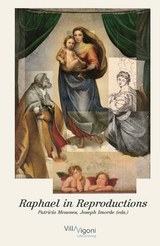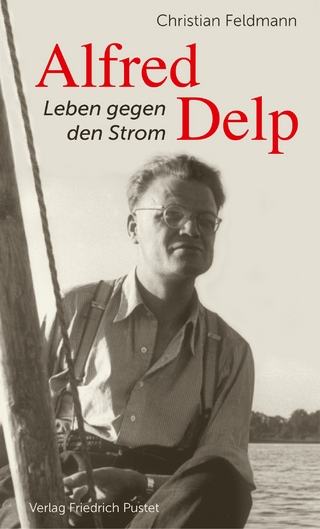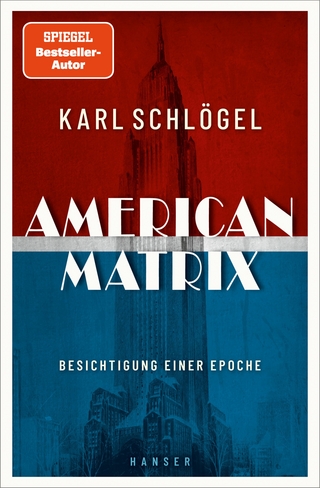Raphael in Reproductions
Nova MD (Verlag)
978-3-98595-348-6 (ISBN)
Patricia D. Meneses is professor of Art History at State University of Campinas, Brazil (UNICAMP). Meneses earned her PhD in History of the Visual Arts at the Università degli Studi di Pisa (2009). She is the author of Baccio Pontelli a Roma. L’attività dell’architetto per Giuliano della Rovere and editor of several books such as Arte Não Europeia. Conexões Historiográficas a partir do Brasil (2020) and A imagem como Experimento (2021). Her current research focuses on the relationship between science, ecology and art in nineteenth-century visual culture.
Joseph Imorde studied Art History, Philosophy and Musicology in Bochum, Rome and Berlin. He was editor of the architectural magazine Daidalos. In 1996 he founded the publishing house Edition Imorde. After his PhD on ephemeral architecture in the Roman Baroque he became assistant professor at the Institute of History and Theory of Architecture at the Federal Technical University (ETH) in Zurich. 2001 he joined the research group Kultbild at the University of Muenster. He finished his habilitation Michelangelo Deutsch! at the Technical University Dresden in 2008 and got a full professorship for Art History at the University of Siegen in the same year. From 2009–2011 he was Alexander-von-Humboldt Fellow at the University of Michigan, 2012 and 2017 Scholar at the Getty Research Institute. In 2021 he was appointed professor for Art History at the kunsthochschule weissensee berlin.
Introduction Raphael and the anniversary that [almost] wasn’t Celebratory dates, in art history, are usually occasions to re-evaluate an artist’s work and historiography. At the same time, these celebrations, be they exhibitions, congresses, publications or even commercial exploitation, reflect the social and cultural concerns of the societies that promote them. The 500th anniversary of Raphael’s death, in 2020, promised a grand celebration, starting with a major exhibition at the Scuderie del Quirinale, when the COVID-19 pandemic swept all the nicely laid out plans away. All the congresses were postponed to 2021 or later; many became virtual, taking place in the now ubiquitous online platforms. Organizers of the scheduled exhibitions delayed their events – when not cancelled them altogether – but also had to find a completely different way of reaching the public in their isolation. The solution was in media tools: videos, interactive websites, online exhibitions and publications. We still do not know how future generations will see the celebrations of 2020 – 2021, but for us, the 500th Anniversary of Raphael’s death is marked by mediated experience and reproductions. The articles presented in this volume are based on presentations and debates that occurred during the conference Raphael in Reproductions. Global Perspectives. Originally set to take place in November 2020, at Villa Vigoni, it was postponed, like innumerous cultural and scientific manifestations that year, and finally ended up happening in digital space over three very productive days between 3 and 5 May 2021. This book and the congress that originated it, therefore, are part of this larger context but also represent a reflection on these complex times we live in. Our focus, from the start, was on reproductions and the reception of Raphael, an approach that was decided even before the pandemic and eerily appropriate, considering what was about to happen. In a year when most museums remained closed and exhibitions were postponed, all that scholars and the general audience had were the images of artworks, in books and calendars, on computers and cellphones, in a poster on a wall or on a nostalgic souvenir from past travels. The debate around reproductions touches on several aspects of visual studies. From a manual copy to digital photographic reproductions, these images can involve debates about image circulation, aesthetic mediation, museological and curatorial registry, cultural structions and, very often, instrumentalization of an original work and its multiple values. The studies included in this volume cover many of these aspects, focusing on the nineteenth and twentieth centuries, before the advent of the digital image. This period marks the development of the idea of high fidelity in art reproductions as well as the widespread diffusion of popular, cheap images related to art history. From the nineteenth century on, technical progress in printmaking processes allowed for better rendering of painted surfaces and lower costs. The century also saw the birth of photography and, later, the popularization of photographic reproductions through new technologies, such as albumen print or the wet-plate collodion process. The idea that photographs produced an exact and objective transcription of reality created a compelling drive for artists, engravers and photographers to achieve an ideal reproduction. Nevertheless, « in the third quarter of the nineteenth century a painting could in no way be facsimiled; it could only be approximated, replaced with a token equivalent ». 1 Only in the late 1800s were reliable photomechanical printing techniques created. The twentieth century will finally bring more reproductive precision and the establishment of commercial color photography. These two centuries and their thirst for images laid the foundations for the age of digital, often immaterial, reproductions and aesthetic experiences. Few occasions show this passage more clearly than the 500th anniversary of Raphael’s death, when the original artworks were conspicuously absent. The volume begins with Friederike Kitschen’s contribution and the question of how Raphael’s paintings were reproduced in color from 1721 to 1909. The main focus lies on printing techniques with three or more plates and on the endeavors to capture the ‹natural› colors of the master’s works. Andrea de Benedetti, on the other hand, focuses on the work of J. D. Passavant and his creation of a specific image of the artist through an articulated discourse in his monographic study on the artist and the reproduction of the supposed self-portrait of Raphael (Head of a Youth), preserved at the Ashmolean Museum, for his art-historical publications. Joseph Imorde takes on an Illustrated Sport Book from 1883 that promotes the sport of collecting reproductions after Raphael for modern women. The emergence of such a popular collecting practice presents academic art history with the problem that the discursive interest shifts from the object viewed to the viewing subject. The text puts that paradigm shift into a broader cultural perspective. Alexandra Enzensberger’s paper addresses reproductions of Raphael’s tapestry designs in a twofold manner: as weaved copies from an original source, i.e., Raphael’s cartoons but also photographic images functioning as registries of museum displays of such copies. Giovanna Targia discusses the uses of Raphael reproductions on the Atlas Mnemosyne while also reflecting on the different appropriations Warburg’s panels underwent through the years. Karolina Zgraja examines Heinrich Wölfflin’s project for a never published book on Raphael. Through previously unpublished documents, she discusses the importance of reproductions for Wölfflin’s analytical methods, particularly images illustrating Raphael’s preparatory sketches. Finally, Patricia Meneses discusses the uses of photographic reproductions of Raphael’s works of art in Brazil in the context of the acquisition of the so-called Kinnaird Resurrection by the São Paulo Art Museum (MASP) in the 1950s. The editors would like to thank Christiane Liermann Traniello and Villa Vigoni for welcoming our conference at the German-Italian Centre for the European Dialogue and supporting the publication of this volume. We also thank the German Research Foundation and the Collaborative Research Center 1472 «Transformation of the Popular» for substantial financial support. Patricia Meneses and Joseph Imorde April 2022
IntroductionRaphael and the anniversary that [almost] wasn'tCelebratory dates, in art history, are usually occasions to re-evaluate an artist's work and historiography. At the same time, these celebrations, be they exhibitions, congresses, publications or even commercial exploitation, reflect the social and cultural concerns of the societiesthat promote them. The 500th anniversary of Raphael's death, in 2020, promised a grand celebration, starting with a major exhibition at the Scuderie del Quirinale, when the COVID-19 pandemicswept all the nicely laid out plans away. All the congresses were postponed to 2021 or later; many became virtual, taking place in the now ubiquitous online platforms. Organizers of the scheduled exhibitions delayed their events - when not cancelled them altogether - but also had to find a completely different way of reaching the public in their isolation. The solution was in media tools: videos, interactive websites, online exhibitions and publications. We still do not knowhow future generations will see the celebrations of 2020 - 2021, but for us, the 500th Anniversary of Raphael's death is marked by mediated experience and reproductions. The articles presented in this volume are based on presentations and debates that occurred during the conference Raphael inReproductions. Global Perspectives. Originally set to take place in November 2020, at Villa Vigoni, it was postponed, like innumerous cultural and scientific manifestations that year, and finally ended uphappening in digital space over three very productive days between 3 and 5 May 2021. This book and the congress that originated it, therefore, are part of this larger context but also represent a reflection on these complex times we live in.Our focus, from the start, was on reproductions and the reception of Raphael, an approach that was decided even before the pandemic and eerily appropriate, considering what was about to happen. Ina year when most museums remained closed and exhibitions were postponed, all that scholars and the general audience had were the images of artworks, in books and calendars, on computers and cellphones, in a poster on a wall or on a nostalgic souvenir from past travels.The debate around reproductions touches on several aspects of visual studies. From a manual copy to digital photographic reproductions, these images can involve debates about image circulation, aesthetic mediation, museological and curatorial registry, cultural structions and, very often, instrumentalization of an original work and its multiple values. The studies included in this volume cover many of these aspects, focusing on the nineteenth and twentieth centuries, before the advent of the digital image. This period marks the development of the idea of high fidelity in art reproductions as well as the widespread diffusion of popular, cheap images related to art history.From the nineteenth century on, technical progress in printmaking processes allowed for better rendering of painted surfaces and lower costs. The century also saw the birth of photography and, later, the popularization of photographic reproductions through new technologies, such as albumen print or the wet-plate collodion process. The idea that photographs produced an exact and objective transcription of reality created a compelling drive for artists, engravers and photographers to achieve an ideal reproduction. Nevertheless, « in the third quarter of the nineteenth century a painting could in no way be facsimiled; it could only be approximated, replaced with a token equivalent ». 1 Only in the late 1800s were reliable photomechanical printing techniques created. The twentieth century willfinally bring more reproductive precision and the establishment of commercial color photography.These two centuries and their thirst for images laid the foundations for the age of digital, often immaterial, reproductions and aesthetic experiences. Few occasions show this passage more clear
| Erscheinungsdatum | 22.07.2022 |
|---|---|
| Verlagsort | Deutschland |
| Sprache | englisch; deutsch; italienisch |
| Maße | 160 x 235 mm |
| Themenwelt | Literatur ► Biografien / Erfahrungsberichte |
| Kunst / Musik / Theater | |
| Geisteswissenschaften ► Geschichte ► Regional- / Ländergeschichte | |
| Schlagworte | Brasilien • bruckmann • Deutschland • Italien • Kunst • Passavant • Populärkultur • Raphael • Renaissance • Reproduktion • Rezeption • Warburg • Wölfflin |
| ISBN-10 | 3-98595-348-1 / 3985953481 |
| ISBN-13 | 978-3-98595-348-6 / 9783985953486 |
| Zustand | Neuware |
| Haben Sie eine Frage zum Produkt? |
aus dem Bereich




